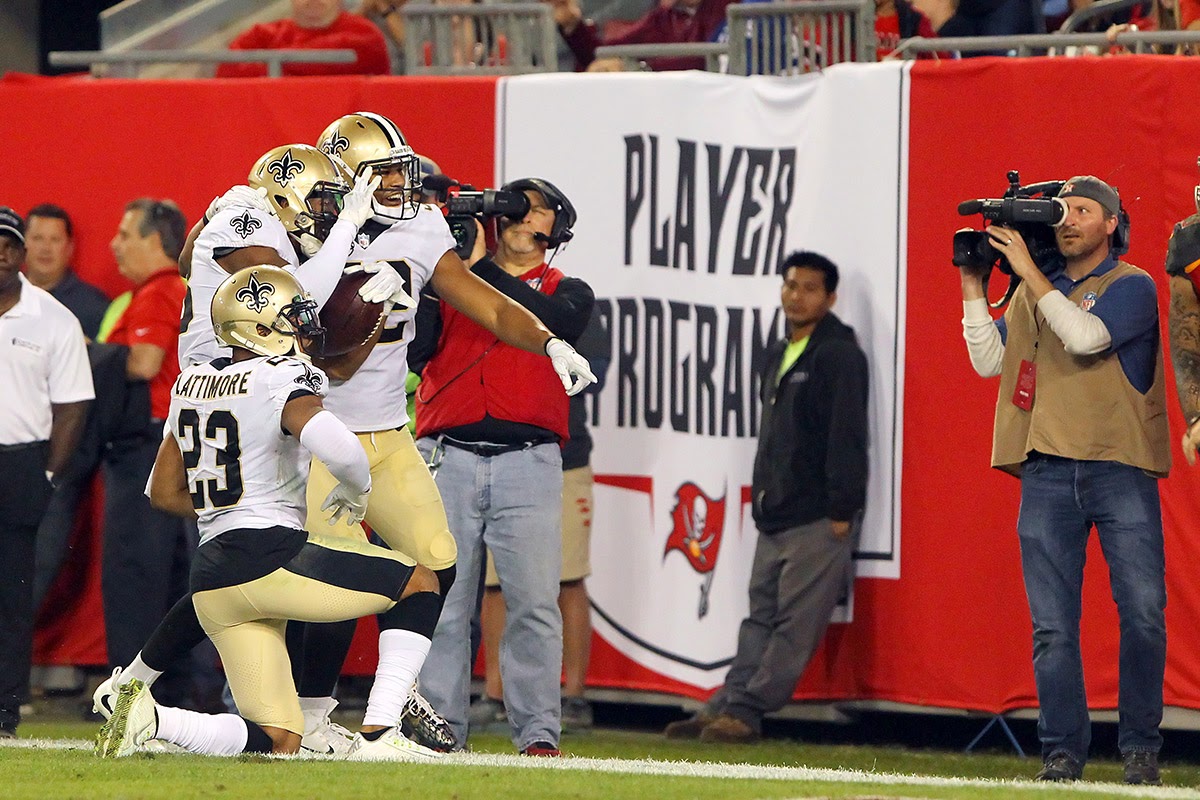No matter what season is on the calendar, die-hard football fans are always hungry for content.
It’s why NFL Films run a massive content-creation machine, supplying their large and loyal audience with original year-round programming that highlights the most exciting and memorable moments in the game.
In this installment of Made in Frame, we were lucky to speak with the team from NFL Films, who use Frame.io as a key part of their workflow to produce their Emmy-winning series, premium shows, and content for their 24-hour network, social media, and keep scoring with their fans.
The quantity (and quality) game
We don’t use the word “massive” lightly.
There are 32 NFL teams who play throughout an 18-week regular season plus 16 postseason games. That’s 288 games.
NFL Films estimates they create 30 shows with 525 episodes per season. That’s up to 200 hours of content every week, requiring approximately 2500 transcodes an hour on Sundays.
To top that off, there’s the Super Bowl which, according to NFL Films’ Production Delivery Manager Pete Locke, is “like a normal week times ten.”Keep in mind, also, that while the home viewer is watching the network broadcast version of the game, NFL Films’ mission is different.
They’re there to capture aspects and angles of the game that are designed to amaze fans with their unique and intimate views of the action—which explains the whopping 133 Emmy Awards they’ve amassed in their nearly 60-year history.
According to Travis Boyer, Director of Media Administration, “Quality is our mantra.”
The Hollywood playbook
Before we dive into how they manage their workflow today, it’s important to understand that as recently as 2014, NFL Films shot everything on actual film.
The film needed to then be processed at the lab, and put up on a telecine to create digital files for editing, grading, and audio—an arduous process that in itself took about a week to get through.
The NFL Films Crew has always pushed their creativity and workflow to the limit. Even in the days of film.
But with the ever-increasing demand for content, and the Inside the NFL show changing its slot to Tuesdays instead of Wednesdays, it became clear that the shorter turnaround meant that working from film was no longer viable.
They needed a way to capture their footage and deliver it rapidly, while maintaining their high standards for quality.
“We quickly needed to transition to a digital file acquisition system,” Travis says. “We ordered a new fleet of cameras, and systems were designed and built at every stadium to transmit the digital files back to us as the games were taking place, quarter by quarter, so we could begin working immediately.”
Taking a page from the Hollywood playbook, NFL Films selected a camera package that would give them the kind of cinematic quality they’d been accustomed to getting from film. “We started using ARRI ALEXAs,” Travis says.
“Then we tried lots of other cameras—REDs, Sony, drones, and GoPros. There probably isn’t a camera that we haven’t tried at some point in time. But currently we’re mostly using ARRI AMIRAs.”

The networks who shoot the games for broadcast typically capture in 60p or 29.97i, but NFL Films sticks to the 24p frame rate to, again, retain a more filmic quality.
A crowded field
Because space on the field is in high demand, camera placement is critical.
“There can be multiple networks, the AP, and the teams who have their own cameras,” Travis says. “We’re always looking for the best possible way to place them in order to capture the most unique angles.”
With all the live production crews from the networks shooting too, things on the field can get pretty hectic. But with their custom workflow, NFL Films can work fast and keep their quality high.
Their typical configuration includes an overhead camera and one on the ground, as well as cameras on wires. For the Super Bowl, they might position as many as 35 cameras from different perspectives.

As Pete explains, NFL Films is owned by 32 teams. Each team has its own media departments and camera departments.
“We consult with several of the teams to share packages and settings, and this lets us incorporate their footage into NFL Films’ productions, too.”
A solid game plan
NFL Films sends a crew to capture the action for every single game.
To capture all that footage and push it through the production pipeline, Travis, along with Broadcast Engineer, Joe Valenti, created a complex yet elegant workflow.
“At the end of every quarter, we deliver our camera cards to a media manager, who adds metadata. Audio is captured separately, so they take the sound and video cards and put them in a folder together. They put that onto an SSD, and that goes into the server rack we have at every stadium,” Travis explains.
“That content is delivered over the network through UDP technology. We have a redundant gig connection at every stadium that is a triangulated path, sending to our network and to NFL films to ensure zero packet loss as the files land in our facility in Mt. Laurel, NJ.”
Once the files arrive at the facility, their Telestream Vantage transcoding system automatically keeps those assets together and they’re ingested to their CatDV MAM.
The media management team knows that the audio is classified either as sound (from the field) or wire (directly on a player or coach) and needs to be synced in Fairlight and rendered out through Resolve. They send the synced copy to Vantage and create proxies for the editors (or “producers,” as NFL Films calls them).
Their in-house editorial department is equipped with 90 Avids, which the producers prefer to use for offline editing.
Meanwhile, the color grading department works in Resolve to create the 30i edit-ready version of source camera material for the final online, which they do in Adobe Premiere Pro. When producers are finished with their offline, they can deliver that file to the online editors.
Premiere is backed by a different storage system, so they use a panel that auto links to the edit-ready footage to create the conform, and then to the sound team for sweetening and music.
Adding a new player
So how does Frame.io fit into the NFL Films workflow, and how did they initially approach integrating Frame.io into it?
Their first consideration was getting the Vantage connected to Frame.io.
According to Joe, “They weren’t using Frame.io at the time, but we had a meeting and said that we really wanted this to be embedded in the software, and a few months later we had the beta. It changed everything for us.”
This new API-driven approach allowed NFL Films to move away from involved, manual processes to highly automated, scalable workflows. “The collaboration through the API and using tools that work together in this cohesive system is what we’re working toward,” Travis says.
As content is being produced, it has to go to numerous stakeholders. Internally, it goes to a variety of departments, including media managers and loggers; producers who are pulling out highlights and sound bites; colorists, graphics artists, and sound mixers.
“One of my biggest weekly tasks during the season is to get more than 150 hours of in-game footage where it needs to go, like to our cinematographers so they can review their shots for important things like framing and focus,” Pete says. Using a Frame.io link, Pete can now easily send high-quality 720p H.264 proxies for them to evaluate.
The content also needs to go to outside collaborators like team owners and coaches, who have to give their approvals.
The distribution system that Travis and Joe designed is built into their MAM, which reads the material and can define asset recipients based on the teams, time, and date, and then sends out Frame.io media links with built-in approval and security.
It goes through a chain of command, so as it gets filtered through, the automation looks through the metadata to ensure that the automated notifications go out to the right people as soon as the Frame link is available.
“It’s important for us to be able to get professional-quality files to everyone who needs them, but not everyone is going to be the most technically inclined,” Travis says.
“We wanted something that was versatile and simple to use. Everybody we’ve heard from—coaches, directors, cinematographers—say that it’s so easy to use. That means we’re able to get the feedback we need very quickly, which is invaluable to us.”
“We send links to team owners so they can watch it,” Pete adds. “It works on browsers, it works on iPhones. It just works.”
Pete also manages the Frame.io storage and seats across NFL films. He divides the storage among the various departments (teams) and gives them upload and delete capabilities. If a department is exceeding their storage allotment, they get a warning.
“The Frame.io control panels give a good indication of usage, so it’s easy to allocate more storage or control it,” Pete says. “It’s all pretty intuitive.”
A great defense
Another important factor in NFL Films’ choosing Frame.io is security.
Frame.io gives them the peace of mind to share content outside of their organization, and the flexibility to adjust the level of security as needed for different users and use cases.
“We consider our player wires and everything else as very sensitive content,” Travis says. “But you can overdo security to the point that the person who needs to see it can’t access it, so having a range of security options from the very highest level to almost completely open was important. We’ve tested the security from our end, from our security and IT ops, and they’ve agreed that it meets our standards.”
Joe adds that single sign-on (SSO)—which they plan to implement this year—will make things easier for users.
“If you’re a creative, you should just be able to sit down and start creating. You shouldn’t have to worry about how you’re going to get to a particular site or how you’re going to get the footage you need or what the credentials for it are,” he says.
SSO will also make managing the security for exiting staff an instantaneous process.
An MVP
Frame.io was already a valuable addition to the NFL Films team, but when COVID hit it became apparent that Frame.io was key to their remote workflow.
“We quickly realized that this was going to save us,” says Travis. “Everyone used to be in the building, but now everyone’s working from home, so anyone with a connection to our NFL media—operators, producers, directors, coaches—was viewing a Frame.io link in some capacity at some point.”
Travis explains that their goal was to set up an ecosystem “that took us all the way from initial camera acquisition to whatever medium we’re distributing on, whether it’s TVs or phones.”
“Before, we were working in silos, so being able to connect everything that we’re working on has allowed us to more than double the amount of raw content we’ve been shooting since 2014,” he says.
New goals
With streaming content trending upward, NFL Films is moving further away from traditional media processes and formats.
As far as the future, Travis is constantly searching for his Vince Lombardi trophy—a universal format that allows for both acquisition and delivery without having to duplicate assets, thereby reducing both storage and effort.
Which brings them to how they might embrace new technologies, like 4K delivery.
As Travis puts it, “We take a lot of pride in the product we put out there and in being the best—from the glass to the wrapper of the file, and the way that we transcode and distribute—maintaining that quality is of top importance to us. On occasion we might shoot 4K, but we also can’t blow out our storage capacity.”
NFL Films already has a huge library—one of the reasons Joe has them currently at 10 petabytes of storage—and they need quick and reliable access to all of their assets.
Travis explains: “Everything that was ever shot needs to be archived so it’s available to everyone to search and edit with. There are a lot of famous plays, so we need to be able to easily find that archival footage and pull it into a project. We want to be able to go back to the very first Super Bowl, for example. But when the producers are editing, they need those clips fast. The MAM and library system all depend on metadata feeding the MAM to enable these searches so they can pull in a proxy to work with it. The media management team can restore from archives whether from LTO or the cloud. Redundancy is important as we maintain our archive and have a geographical redundancy so we can pull from different areas whenever we need it.”
Meanwhile, the team is enthusiastic about using Frame.io Camera to Cloud (C2C).
“I’m super-excited to try Camera to Cloud out,” Joe says. “It would be really incredible to have that flexibility with the cameras that we own—it’s something we could do for one-off shoots, and know that the second the camera stops recording, the client’s going to be able to watch that recording on Frame.io.”
With the ever-increasing demand for content, NFL Films can always envision the need for greater speed. But they’ll never compromise on quality.
“We live in the social media era where everyone is instantly posting, but we want to make sure that we’re always delivering the ‘right’ thing,” Travis says.
.@youngchase907 took the league by STORM last year 💪
— NFL Films (@NFLFilms) July 13, 2021
Where will the DROY land on this year's list? 🤔 @WashingtonNFL #NFLTop100 premieres August 15th on @NFLNetwork 🔥 pic.twitter.com/QYbNohb6ss
“Even our social media content goes through a true color grade and sound mix.”
As for us at Frame.io, we just want to keep moving the goalposts with technology like Camera to Cloud so NFL Films can keep delivering the highest quality content even faster and more easily. Those are the wins we dream of.
Featured imagery licensed via Getty Images.




